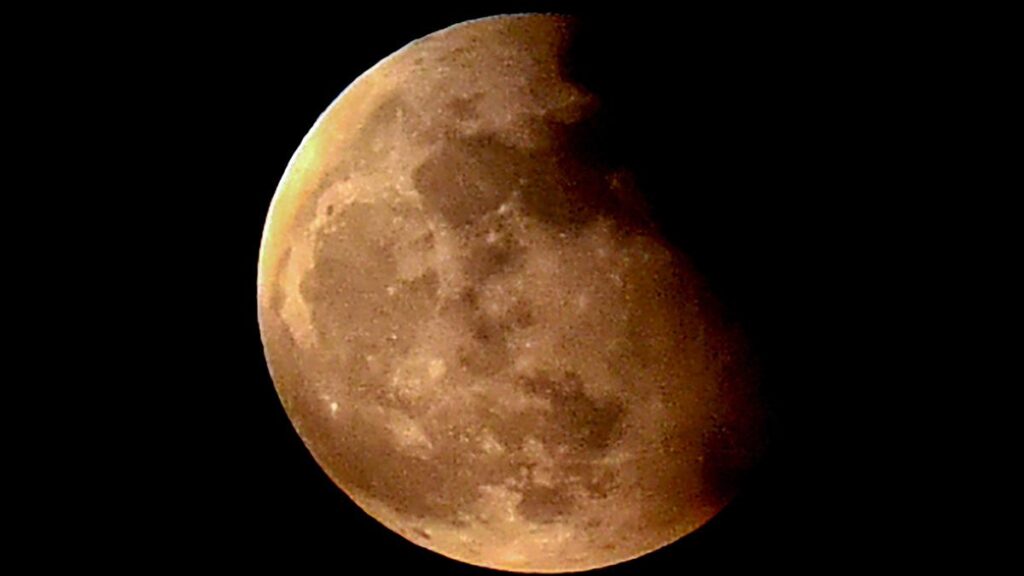Moon partially covered by the earth’s shadow during lunar eclipse
West Bengal, along with other parts of India, Asia, Europe, Africa, and Russia, is set to witness a partial lunar eclipse on the night of October 28. This celestial phenomenon will continue until the early hours of October 29, according to astrophysicist Debi Prasad Duari. Coinciding with this event, people in West Bengal will also celebrate Laksmi puja on Saturday night.
A Chance to Experience a Partial Lunar Eclipse
“There is going to be a partial lunar eclipse on the night of October 28. This eclipse can be experienced by people in India, as well as the entire Asia, Europe, Africa, and Russia,” Mr. Duari explained to PTI. He further mentioned that on October 28, the moon will be partially eclipsed by the shadow of the earth, giving people in India a unique opportunity to witness a partial lunar eclipse.
The Stages of a Lunar Eclipse
A lunar eclipse occurs when the moon passes through two stages of the earth’s shadow. The first stage is known as the penumbral eclipse, where the moon enters a partially shadowed region of the earth, resulting in partial illumination. “The change in brightness is not very noticeable. After this phase, the moon will partially enter the actual dark part of the earth’s shadow, which is called an umbral lunar eclipse and is considered the actual eclipse by most people,” added Mr. Duari.
Timings and Magnitude of the Partial Lunar Eclipse
The penumbral eclipse is expected to start at around 11:31 p.m. Indian Standard Time (IST) on the night of October 28. However, the more noticeable partial Umbral eclipse will begin in the early hours of October 29, around 1:05 a.m. IST. The eclipse will reach its maximum obscurity at approximately 1:44 a.m. and conclude by 2:23 a.m. The magnitude of the partial lunar eclipse will be around 0.12, indicating the maximum covering of the lunar disc.
A Recap of the Annular Solar Eclipse
On October 14, residents of North and South America experienced an annular solar eclipse, where a “ring of fire” was visible across a large part of the western hemisphere. Unfortunately, people in India and Asia were unable to witness this astronomical event as it occurred during the night. However, this particular day was significant as it marked the beginning of Navratri, a major festival celebrated in India and the start of the Durga Puja Festival. In West Bengal and surrounding areas, it was also the day of Mahalaya when people paid homage to their ancestors, symbolizing the beginning of the Durga Puja Festival.
In conclusion, the night of October 28 and the early hours of October 29 will present a captivating sight as the moon gets partially covered by the earth’s shadow, resulting in a partial lunar eclipse. This phenomenon can be witnessed not only in India but also across Asia, Europe, Africa, and Russia. A lunar eclipse is a unique opportunity to marvel at the wonders of our universe, and it reminds us of the beauty and mystery that lies beyond our planet.


